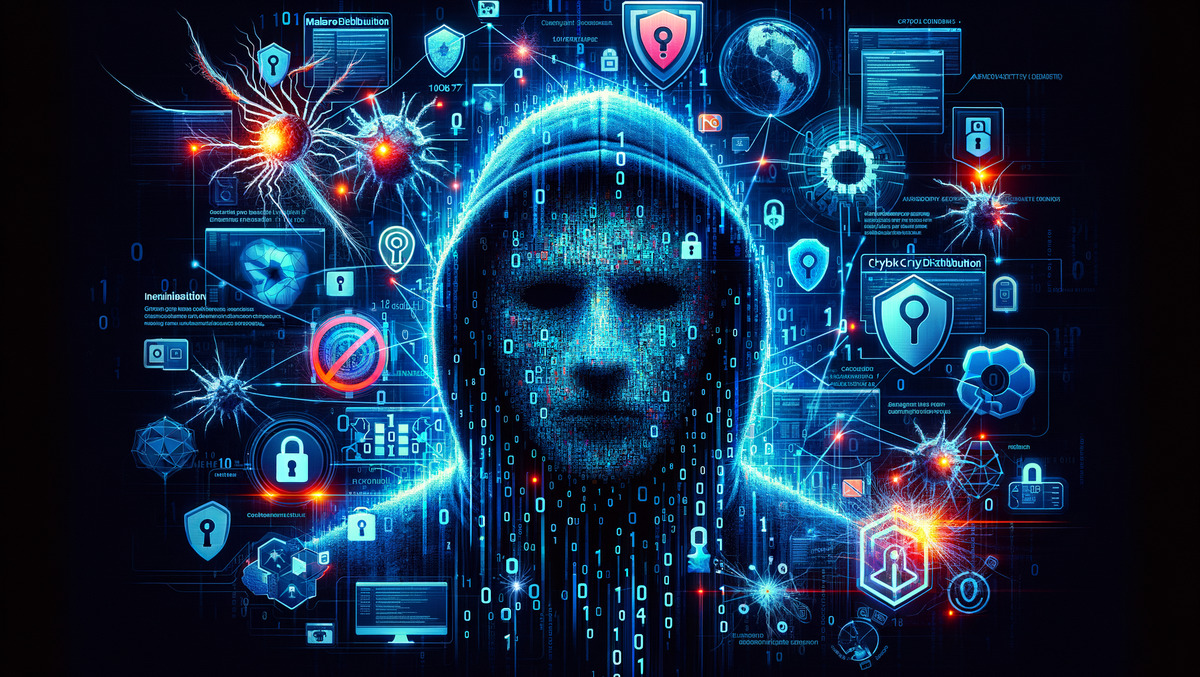The internet, a powerful tool for connection and innovation, also harbors a darker side, where cybercriminals exploit vulnerabilities to steal, disrupt, and harm. As technology advances, so do the tactics employed by these digital adversaries.
Common Cyber Threats
Malware: Malicious software designed to infiltrate systems, steal data, or disrupt operations.
Phishing: Deceptive tactics used to trick individuals into revealing sensitive information, such as passwords and credit card numbers.
Ransomware: A type of malware that encrypts a victim’s data and demands a ransom for its decryption.
Social Engineering: Manipulative techniques used to gain access to sensitive information or systems.
Denial-of-Service (DoS) Attacks: Overwhelming a system or network with traffic, rendering it inaccessible.
Data Breaches: Unauthorized access to sensitive data, often resulting in identity theft and financial loss.
The Impact of Cybercrime
Cybercrime has far-reaching consequences, affecting individuals, businesses, and governments alike:
Financial Loss: Cyberattacks can result in significant financial losses due to data breaches, ransomware attacks, and fraud.
Reputational Damage: Data breaches can damage a company’s reputation and lead to loss of customer trust.
Disruption of Critical Services: Cyberattacks on critical infrastructure, such as power grids and healthcare systems, can have devastating consequences.
National Security Threats: Cyberattacks can be used to spy on governments, steal classified information, and disrupt national security operations.
Protecting Yourself Online
To mitigate the risks of cybercrime, individuals and organizations should adopt robust cybersecurity practices:
Strong Passwords: Use strong, unique passwords for each online account.
Regular Software Updates: Keep your operating system and software up-to-date with the latest security patches.
Beware of Phishing Attempts: Be cautious of suspicious emails and links.
Use Antivirus and Firewall Software: Protect your devices with reliable security software.
Back Up Your Data: Regularly back up your important data to prevent data loss.
Be Mindful of Social Media Privacy Settings: Limit the amount of personal information you share online.
Educate Yourself: Stay informed about the latest cyber threats and security best practices.
By understanding the risks and taking proactive measures, we can help protect ourselves and our digital assets from the ever-evolving threat landscape.
The Evolving Landscape of Cybercrime
The digital age has brought forth unprecedented opportunities, but it has also created a fertile ground for cybercriminals. As technology continues to advance, so do the sophistication and scale of cyberattacks. Here are some emerging trends in the world of cybercrime:
Artificial Intelligence and Machine Learning in Cybercrime
AI-Powered Phishing: AI can be used to create highly personalized phishing emails, making them more convincing and harder to detect.
Autonomous Attacks: AI-driven malware can adapt and evolve, making it more difficult to defend against.
Deepfakes: AI-generated deepfakes can be used to spread misinformation and deceive individuals.
Ransomware as a Service (RaaS)
Lower Barrier to Entry: RaaS models make it easier for cybercriminals, even those with limited technical expertise, to launch ransomware attacks.
Targeted Attacks: Ransomware attacks are becoming increasingly targeted, targeting specific industries and organizations.
IoT Attacks
Vulnerable Devices: The increasing number of IoT devices, many of which have weak security, creates a vast attack surface.
Botnets: IoT devices can be compromised and turned into botnets, which can be used to launch large-scale attacks.
Supply Chain Attacks
Targeting Weak Links: Cybercriminals can target vulnerable third-party suppliers to gain access to larger organizations.
Data Exfiltration: Once inside a supply chain, attackers can steal sensitive data and intellectual property.
Combating Cybercrime: A Multi-faceted Approach
To combat cybercrime, a multi-faceted approach is necessary:
Strong Cybersecurity Practices: Organizations must implement robust cybersecurity measures, such as strong passwords, regular software updates, and employee training.
Incident Response Plans: Having a well-defined incident response plan can help organizations minimize the impact of cyberattacks.
International Cooperation: International cooperation is essential to track and apprehend cybercriminals.
Public Awareness: Educating the public about cyber threats can help individuals protect themselves.
Technological Innovation: Developing advanced cybersecurity technologies, such as AI-powered threat detection and response systems, can help stay ahead of cybercriminals.
By staying informed about the latest cyber threats and taking proactive measures, individuals and organizations can mitigate the risks and safeguard their digital assets.
